Belize Makes Waves in Ocean Protection, But Is It Enough?
There’s a ripple of excitement in the conservation world, and Belize is right at the center of it. We are making serious strides toward protecting our planet’s oceans. Back in 2019, the country joined a bold global mission to safeguard thirty percent of the world’s marine spaces by 2030. Well, fast forward to today, and Belize is not just on track, we’re ahead of schedule. But while the numbers look promising, there’s a bigger question bubbling beneath the surface: how protected are these waters, really? That’s where the Belize Fund for a Sustainable Future comes in. Since 2022, this private conservation trust has been quietly empowering local stakeholders by funding everything from scientific research to sustainable fishing practices, to ensure these marine areas are more than just lines on a map. News Five’s Britney Gordon took a deep dive into the story, visiting some of the protected zones supported by the Belize Fund to find out what it really takes to keep Belize’s blue spaces thriving. Here’s what she discovered.
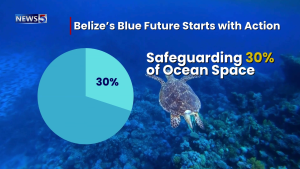 Britney Gordon, Reporting
Britney Gordon, Reporting
Imagine diving into Belize’s crystal-clear waters, expecting a vibrant underwater world, only to find silence, emptiness, and lifeless coral. It’s a haunting image, and one that raises a serious question: are Belize’s protected marine areas truly being protected? While the country has made impressive strides toward the United Nations’ goal of safeguarding thirty percent of ocean space, hitting the target is just one part of the journey. The real challenge? Making sure those areas are sustainably managed and thriving for generations to come. That’s where the Belize Fund for a Sustainable Future comes in. Since its launch, BFSF has been channeling resources from the Blue Bond to support conservation efforts across the country. Executive Director Dr. Leandra Cho-Ricketts explains how this initiative is helping turn policy into real, lasting protection beneath the waves.
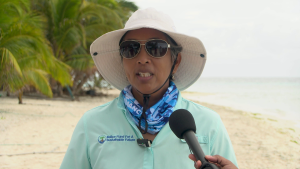
Leandra Cho-Ricketts
Dr. Leandra Cho-Ricketts, Executive Director, Belize Fund
“That’s a big focus of the fund. Trying to make sure we find the right partners to connect with to support initiatives and projects that can create meaningful and impactful changes and lasting changes on the ground. So all our grantees, they’re selecting true calls, and those calls look at particular areas of priorities and in, and today the areas we’re looking at are directly relating to protection for biodiversity and focus on marine protected area management.”
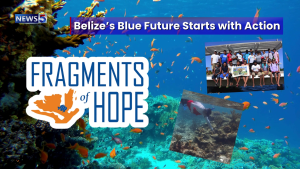 Climate change has taken a serious toll on our oceans, and Belize’s coral reefs are no exception; many have been slowly dying, struggling to survive rising temperatures and shifting weather patterns. But there’s hope beneath the surface. Thanks to support from the Belize Fund, a local non-profit called Fragments of Hope is leading the charge to restore what’s been lost. From replanting corals to studying the effects of bleaching in places like Gladden Spit and Silk Caye, they’re working hard to bring our reefs back to life, one fragment at a time.
Climate change has taken a serious toll on our oceans, and Belize’s coral reefs are no exception; many have been slowly dying, struggling to survive rising temperatures and shifting weather patterns. But there’s hope beneath the surface. Thanks to support from the Belize Fund, a local non-profit called Fragments of Hope is leading the charge to restore what’s been lost. From replanting corals to studying the effects of bleaching in places like Gladden Spit and Silk Caye, they’re working hard to bring our reefs back to life, one fragment at a time.
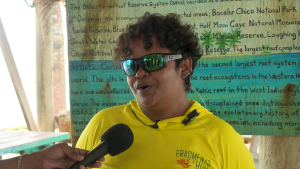
Natasha Gibson
Natasha Gibson, Fragments of Hope
“Laughing Bird Caye, it was one of the best sites ever when I started to work because it had been hit tremendously by a storm and we had lost about ninety something percent of coral coverage around here. And that at that point when I started the coverage was billing up back, meaning we were out doing a lot of work here, a lot of out planting, everything was thriving and looking great. Again, once again, the climate change and everything has been changing. We have had devastating losses, especially last year. We have lost tremendous amount of corals around Laughing Bird Caye.”
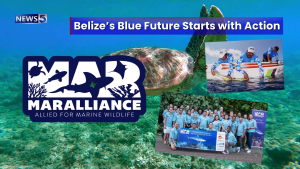 In a country like Belize, where tourism is a major economic driver, a rich and diverse marine ecosystem isn’t just beautiful, it’s essential. But with climate change shifting the balance underwater, what’s happening to the species that draw visitors from around the world? That’s exactly what MarAlliance is working to uncover. With support from the Belize Fund, they’re tracking how marine life is responding to these changes, helping tour operators better understand and predict where key species might be found. Program Coordinator Kirah Foreman shares how this research is shaping the future of marine tourism.
In a country like Belize, where tourism is a major economic driver, a rich and diverse marine ecosystem isn’t just beautiful, it’s essential. But with climate change shifting the balance underwater, what’s happening to the species that draw visitors from around the world? That’s exactly what MarAlliance is working to uncover. With support from the Belize Fund, they’re tracking how marine life is responding to these changes, helping tour operators better understand and predict where key species might be found. Program Coordinator Kirah Foreman shares how this research is shaping the future of marine tourism.
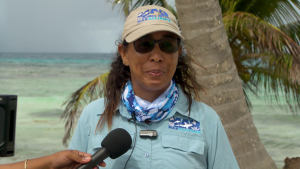
Kirah Foreman-Castillo
Kirah Foreman-Castillo, Program Coordinator, MarAlliance
“We’re looking at what we call megafauna. So everyone knows is those big iconic species like your sharks, your turtles, your rays. One of the things that Southern Belize is known for is whale sharks. And within the past, within recent years, we are just not seeing those numbers. A matter of fact, we’re not seeing any at all. I think this year there were somebody who saw one whale shark, which is almost nothing. So our Belize Fund project is to that project. We’re trying to figure out what’s going on with our whale shark. Where have they gone? Will they come back? And what’s going on with the other species of sharks? Raise turtles, the rest of the megafauna within the area.”
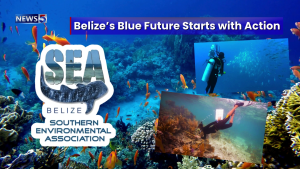 A new high-tech surveillance camera has been installed at Laughing Bird Caye National Park, named after the Laughing Gulls that live there. The camera can rotate 360 degrees and see up to nine miles, day or night. It’s become a key tool for the Forest Department and the Southern Environmental Association, helping them monitor this fully protected no-take zone more effectively.
A new high-tech surveillance camera has been installed at Laughing Bird Caye National Park, named after the Laughing Gulls that live there. The camera can rotate 360 degrees and see up to nine miles, day or night. It’s become a key tool for the Forest Department and the Southern Environmental Association, helping them monitor this fully protected no-take zone more effectively.
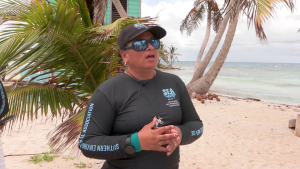
Elizabeth Mushchamp
Elizabeth Mushchamp, Executive Director, Southern Environmental Association
“Even before the cameras went up at our first fisher forum, we had made them aware that we would be putting up the cameras. And then once they were put up, we made them aware again. So every opportunity we have, we let them know about the cameras, that the cameras are there. What we have shared with them for Fishers is that I think it also gives them a sense of security that if something goes wrong, that they feel that someone is watching it. So yes, it could be a contributing factor as to why we haven’t had any incursions in the areas from our local people.”
The Belize Fund splits its financing into two main streams: one for government projects and another for non-government organizations. Program Manager Josue Oliva says the goal is to make funding simple and accessible. They’ve also launched community grants to help grassroots and emerging groups get the support they need to make a difference.
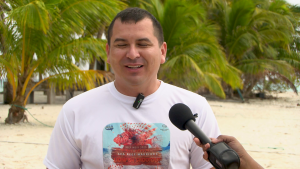
Josue Oliva
Josue Oliva, Program Manager, Belize Fund
“It is a competitive process. As much as we would want to fund everyone, you know that, as Dr. Ricketts mentioned, there is just sinking funds, so it has to be competitive. And how do we do it competitively? We ensure that the projects that we get are aligned to one, at least one of our four thematic areas, right? Protection for biodiversity, sustainable fisheries, climate resilience, or blue business innovation.”
Although the work of the Belize Fund is vital, it will not be around forever. That is why the trust is doing its best to prove how well-managed financing can protect biodiversity, support livelihoods, and strengthen national resilience in the face of climate change.
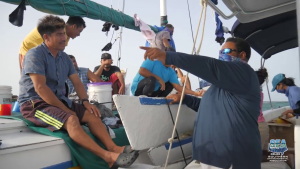 Dr. Leandra Cho-Ricketts
Dr. Leandra Cho-Ricketts
“The Blue bonds money is not infinite. It is a fixed amount. So we have sinking funds, which means the money comes in, we spend it months, it’s done, it’s gone. We have a total of 80 million US coming in until 2041. We’re three years into that period. So it was a twenty year period. We’ve gone for three years now doing operations and we’ve invested roughly twenty-five to twenty-six million Belize already of that eighty million US.”
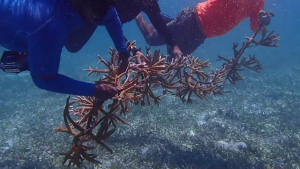 Being a conservationist isn’t easy, it takes grit, passion, and a whole lot of patience. But when organizations are given the right tools and support, something powerful happens, they push through the challenges and keep fighting for what they believe in.
Being a conservationist isn’t easy, it takes grit, passion, and a whole lot of patience. But when organizations are given the right tools and support, something powerful happens, they push through the challenges and keep fighting for what they believe in.
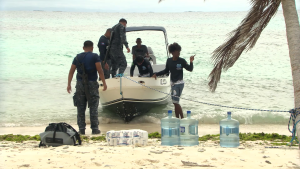 Elizabeth Mushchamp
Elizabeth Mushchamp
“I have a very committed team, a very dynamic and committed team. And for the last couple years I have found my team to be very committed. Whatever challenges, I like to say we don’t have challenges, we just have situations that we deal with. Because when you put the word challenge, it seems like something so difficult to overcome. I think each area, whether it’s financing, sustainable financing, enforcement, for each one of them comes with their own level of challenges.”
As Belize steps up its efforts to protect our precious marine resources, there’s one organization making sure every dollar counts—the Belize Fund. While stakeholders are out in the field doing hard work, the fund is behind the scenes, ensuring that every investment goes toward projects that will leave a real, lasting impact. Britney Gordon for News Five.





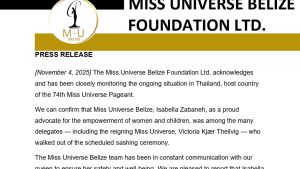
Facebook Comments